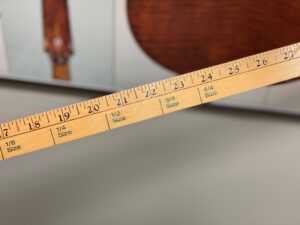I received a great question recently from a local orchestra director. I believe she fielded the question from a student in her class and it stumped me! What a great question! I’ve been using the same fractional naming system for decades without really questioning where it came from. After doing a little digging, it turns out I couldn’t find a simple answer! If you have expert insight, please comment on this post. Here is what I wrote the director:
Okay, so when I really got into this and started digging, it became apparent that there are a lot of “old wives tales” regarding the how/when/why of using fractions to express instrument sizes. While smaller-than-full-size instruments have been made for hundreds of years, the best guess for when fractions were consistently used for instruments was the late 19th century in Germany. This is the first instance of true mass production of violin-family instruments and there would have been demand for some kind of naming convention for the different sizes.
My initial guess is that it had something to do with Suzuki method, but there are clear examples of violins being referred to as “1/2 size” in Sears catalogues from the early 20th century. So, the Suzuki theory didn’t really hold any water.
Using violins as an example, the current naming convention equates to:
4/4 – 14” body length (measuring the back of the violin from bottom to top, not including the heel of the neck)
¾” – 13” body length
½” – 12” body length
¼” – 11” body length
If we want to apply any math or fractions to things, the closest we can come is to say that a ¾ violin is 37/40 (.925) of a 4/4 violin, and a ½ violin is 37/40 (.925) of a ¾ violin, and so on. So, we have this .925 number that seems somehow significant – do we find anything close in music? In equal temperament tuning (used to tune pianos, for instance), each octave is divided by 12 notes. So, descending down a note, the next note would be .917 of the way down the octave.
The theory that the violin size was somehow dictated by the tuning scale is the closest thing I’ve come to that makes any sense, but that would still mean that someone decided that it was easier to call a 13” violin body-length a “3/4” than a “37/40”…and I agree with them!
I’m going to keep working on this as I’m able to see if there is any consensus to be found. I did find a discussion that included some very well-respected experts, and none of them put forth anything definitive on the subject.


Recent Comments